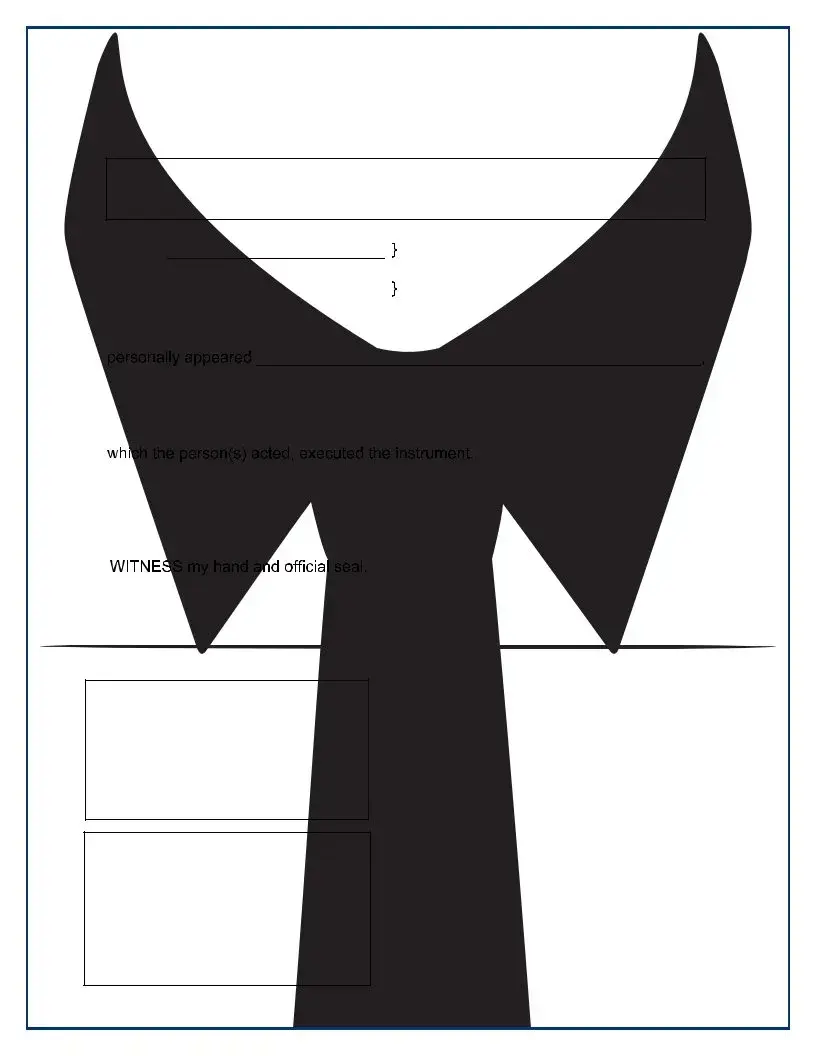The California Jurat with Affiant Statement is one document that bears similarities to the California Acknowledgment Certificate form. Both forms are notarial acts used in legal documents to verify different aspects of the signing process. While the Acknowledgment Certificate verifies the identity of the signer and their understanding and willingness in signing the document, the Jurat also includes an oath or affirmation from the signer, attesting to the truthfulness of the document content. Each serves to provide a layer of authentication, ensuring that documents are not only executed willingly but also truthfully.
Another comparable document is the Proof of Execution by Subscribing Witness form. This document is used when the principal signer of a document cannot be present before a notary public and instead employs a subscribing witness to attest to the execution of the document. Like the California Acknowledgment Certificate, it involves a third-party verification process, but instead, focuses on the witness's ability to attest to the signing rather than directly verifying the signer's identity and capacity.
The Certificate of Identity Verification form shares a purpose with the California Acknowledgment form in that both are used to confirm a person’s identity. However, the Certificate of Identity Verification is often used in more specific circumstances, such as for verifying identity before issuing certain documents or in financial transactions. Both forms require a notary or authorized officer to verify the individual's identity, ensuring that documents or transactions are being conducted by the rightful parties.
The Power of Attorney (POA) Certification is similar to the California Acknowledgement Certificate in that it often involves the use of a notary public to authenticate the identity of the individuals involved. A POA Certification confirms that the individual granting authority, or the principal, has authorized another person, the agent, to act on their behalf. While the essence of the Acknowledgment Certificate focuses on confirming the signer’s identity and their understanding of the document, the POA Certification emphasizes the legal granting of powers from one individual to another.
Trust Certification forms, used to certify the existence of a trust and outline the powers granted to trustees, also necessitate a formal acknowledgment of the involved parties' identities and capacities, similar to the California Acknowledgement Certificate. This document often requires notarization to add a layer of verification, ensuring that the trustees identified are indeed authorized to act on behalf of the trust.
The Marriage Certificate Request form, while differing in application, also requires a sworn statement or acknowledgment that the information provided is true and correct, paralleling the notary public's role in verifying the identity of signers in the California Acknowledgment Certificate. Moreover, both documents must be signed in the presence of a notary or authorized officer to ensure authenticity.
Finally, the Deed of Trust form, often used in real estate transactions to secure a loan with the property as collateral, necessitates a notarization process similar to the Acknowledgment Certificate. The document confirms that the individuals entering into the agreement are doing so willingly and are properly identified, which is crucial for legal validity and record-keeping purposes, mirroring the acknowledgment's role in confirming signers’ identities and capacities.


